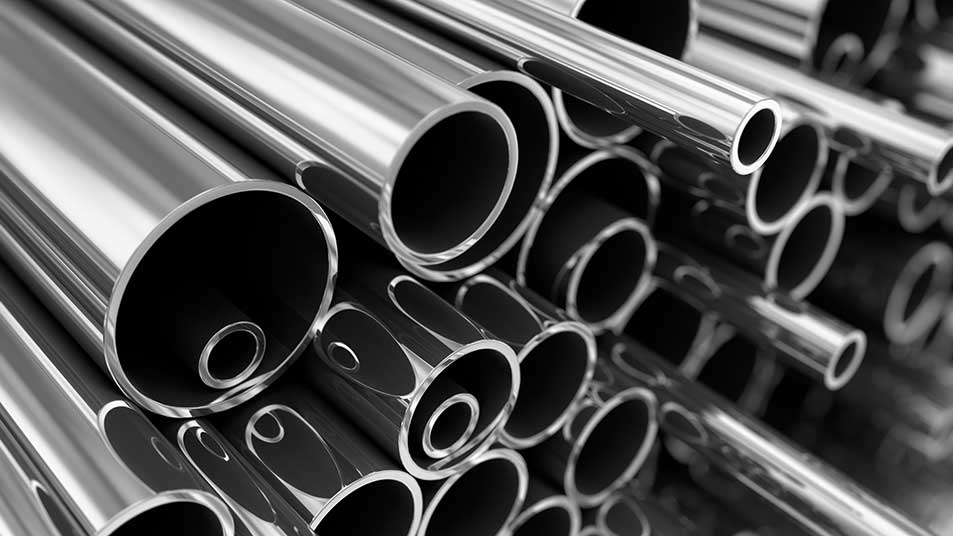In drawing processes, there two main types of lubrication. Firstly, there is fluid or hydrodynamic lubrication, which is the separation of metal surfaces with a continuous film of lubricant that prevents contact of those metal surfaces. Secondly, there is boundary lubrication, which is separating metal surfaces by a film only a few molecules thick.
The drawing process generates extreme pressures and the lubricant needs to perform to ensure proper separation of metal surfaces.
Factors for Drawing Fluid Selection
There are many factors that will affect lubricant selection. We will examine these factors and how they may affect lubricant selection and use. Considering these factors will ensure proper separation and excellent performance.
Type of Metal
Not all metals are alike. The first classification for metals is whether it is ferrous, non-ferrous, or an alloy. The hardness of metal will also be a key factor. Harder metals will require higher pressures, thus higher operating temperatures. A harder metal will need a lubricant that provides excellent cooling to prevent poor finishes or melting. Resistance to rust and corrosion varies metal to metal. Porous metals, such as cast iron, are porous and can rust quickly during annealing. Applications with those kinds of metals may require a lubricant that has rust/corrosion preventative additives.
Severity of Operations
The severity of the operation will be key to determining what kind of lubricant you need. Operations with extreme pressures may require lubricants with extreme-pressure and anti-wear additives to maintain proper lubrication. Operating speeds play a key role in determining the viscosity needed. Higher speeds will require lower viscosities so that the lubricant will adequately circulate. As temperatures rise, viscosity can degrade quickly. When the lubricant becomes too “thin” or “runny”, proper separation may be lost. Some lubricants will include viscosity index (VI) improvers to help maintain proper fluid thickness as temperatures rise.
Tooling
The tooling used in drawing may affect the lubricant selection. Some of the tools used in drawing include:
- Dies for cold drawing
- Rolls for forming strips and shapes
- Cutting tools
- Extrusion dies
- Heading dies
- Plugs
- Mandrels
The material of the tools also matters. In high temperatures, tool life may diminish and a lubricant that extends tool life improves performance and reduce costs. Tooling can be made of the following materials:
- Steel
- Carbide
- Diamond (synthetic or natural)
Subsequent Processes and Applications
Once a workpiece has completed the metal working process, most likely it still has to go through more manufacturing processes. Some of these include: annealing, cleaning, painting, and assembly into the final product. Cleaning the workpiece is import for final assembly as you want to avoid rust and corrosion. Drawing fluids that are emulsifiable are easier to clean and are preferred by some manufacturers. The cleaning process used also matters. Whether you use a dip tank, spray washer, or vapor degreaser, selecting a fluid that can wash away while also reducing rust and corrosion will be dependent on the cleaning process. Many fluid manufacturers, such as Twin Specialties, supply cleaners that are developed with their drawing fluids in mind.
Economic Considerations
With limited budgets, manufacturers must be pragmatic in selecting a fluid. Opting for a less expensive product may have hidden costs that are not realized at time of purchase. Lower quality fluids may reduce tool life and the fluid itself may need to be changed more frequently. These costs can add up and may not be realized until the job is completed. If your budget allows for it, opting for a synthetic fluid may prove to be a smart choice. Even though lubricants do not make up most of the budget, selecting the right lubricant can create tremendous cost savings on other parts of the income statement.
Takeaways
Each manufacturer has unique conditions and budgets; thus, no lubricant can be a one-size-fits-all product. Analyzing your metal workpieces, operations, tooling, cleaning and assembly processes, and budget will provide clarity. That clarity can aid lubricant selection and allow you to focus more on your manufacturing.
Working with manufacturers and distributors to determine the proper lubricant is the best strategy to maximize efficiency and boost the bottom line. Twin Specialties can analyze your processes and budget considerations to find the optimal lubricant.


